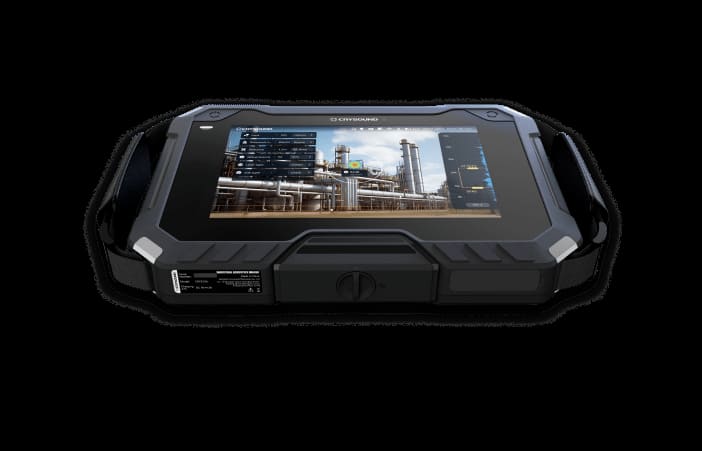
In a world where sound plays a pivotal role in everything from industrial applications to environmental monitoring, acoustic cameras have become a game-changer in how we detect, analyse, and visualise sound. While traditional microphones and audio sensors can capture sound, they often lack the ability to spatially locate and identify specific sources of noise. This is where acoustic cameras come in, offering a breakthrough solution for sound analysis that goes beyond simple recording.
In this blog post, we’ll explore what an acoustic camera is, how it works, and the wide range of applications that benefit from this cutting-edge technology.
What Is an Acoustic Camera?
An acoustic camera is a sophisticated device that combines microphones with advanced imaging technology to create a visual representation of sound. It uses an array of microphones, typically arranged in a grid or matrix, to capture sound from various directions. These microphones are often paired with infrared cameras or cameras that visualise sound waves, allowing users to “see” sound sources in real-time.
The result is a detailed visual map, often referred to as a “soundscape,” that shows where sounds are emanating from, how loud they are, and the frequencies involved. The image may look like a heat map, where different colours represent varying levels of sound intensity.
How Does an Acoustic Camera Work?
An acoustic camera works by using multiple microphones arranged in a specific pattern. These microphones capture sound at different points in space, which is then processed to pinpoint the exact location of each sound source. The system calculates the time difference between when each microphone picks up a sound wave, allowing it to triangulate the source’s position.
Once the data is collected, it is analysed using sophisticated software that generates an image or video, superimposing the sound intensity over a visual representation of the environment. The result is a precise and informative map of sound sources, which can be useful for everything from locating leaks in pipes to identifying unwanted noise in machinery.
Applications of Acoustic Cameras
The versatility of acoustic cameras makes them useful across various industries. Here are some of the key areas where they are making an impact:
1. Industrial Noise Analysis
In manufacturing plants and factories, noise can often be a sign of mechanical issues, such as faulty bearings, leaks, or inefficiencies. Acoustic cameras can quickly identify these sources of noise, allowing maintenance teams to address problems before they become major failures. By visualising the exact location and intensity of the sound, engineers can target repairs more effectively, saving both time and resources.
2. Automotive and Aerospace Testing
In the automotive and aerospace industries, acoustic cameras are used to study vehicle noise and vibrations. This helps manufacturers design quieter cars, trucks, and airplanes by pinpointing noise sources such as engine compartments, exhaust systems, or airflow turbulence. The ability to identify specific problem areas leads to better noise reduction strategies and improved product performance.
3. Environmental Monitoring
Acoustic cameras are also valuable tools for environmental monitoring. They can help track noise pollution in urban areas, construction sites, or wildlife habitats. By visualising and localising sound emissions, regulators can more easily assess compliance with noise ordinances or study the impact of human activity on natural ecosystems.
4. Medical and Scientific Research
In the medical field, acoustic cameras are used in research and diagnostics, especially in the study of human physiology. For example, they can assist in analysing lung sounds or the sounds of internal organs to help diagnose respiratory conditions or other health issues. In scientific research, these cameras are also used to investigate complex sound phenomena, such as acoustics in various materials or environments.
5. Building and Construction
Acoustic cameras are employed to detect sound leaks or to assess acoustic insulation in buildings. This is particularly useful in the construction of soundproof rooms, theatres, or other spaces where noise control is critical. Identifying problem areas in the building’s structure or materials can improve sound isolation, creating more comfortable environments.
Conclusion
Acoustic cameras represent a revolutionary advancement in sound detection and analysis. By combining sound capture with visualisation, they provide unmatched precision and insight into the sources and characteristics of sound. From industrial machinery and automotive testing to environmental monitoring and medical diagnostics, the applications are vast and varied.
As technology continues to evolve, we can expect even more innovative uses for acoustic cameras, helping industries around the world improve efficiency, safety, and sustainability while tackling noise-related challenges in new and exciting ways. Whether it’s identifying mechanical issues, monitoring environmental noise, or enhancing product design, acoustic cameras are a valuable tool in today’s fast-paced, noise-filled world.